MISSION TO MOVE: Fit for the digital future
Michael Huis on the SoftwareQualificationProgram at Bosch
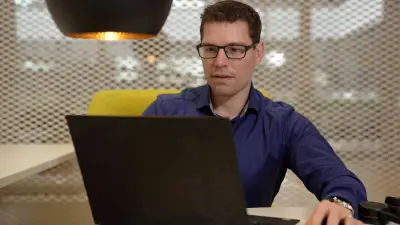
Artificial Intelligence (AI) and the Internet of Things (IoT) are changing the way we work — and they require new skills. This is why Bosch prepares its employees for key topics of the future with training programs such as “MISSION TO MOVE”.
As a leading IoT company, Bosch is in the midst of the biggest transformation in its corporate history. In addition to attracting new software and IT talents, Bosch is focusing on internal digital skills development. With various programs and training courses, Bosch enables employees — for example those working on traditional drive technology — to move into high-growth areas. MISSION TO MOVE is one of these initiatives.
About the MISSION TO MOVE SoftwareQualification program
The development of employee skills plays an important role at Bosch. In the context of transformation, skills in the area of software are particularly relevant. One program that helps employees build these competencies is the MISSION TO MOVE qualification program, which focuses on software qualification. The qualification takes place in cooperation with the Robert Bosch Kolleg as well as colleges and universities and can be completed during working hours within one year for part-time employees or within three months for full-time employees. MISSION TO MOVE also offers qualification programs in the areas of electrification and data. The SoftwareQualification program consists of various lecture modules and project weeks. Depending on their target position, participants can also choose from many supplementary offerings such as job application training and individual in-depth modules. After successful, certified graduation, the graduates will take on new tasks in areas with a lot of potential for the future, such as software development.
Michael Huis is one of many Bosch employees who have completed the MISSION TO MOVE SoftwareQualification program. For one year, he attended lectures and seminars two days a week.
Why did you decide to join the MISSION TO MOVE program?
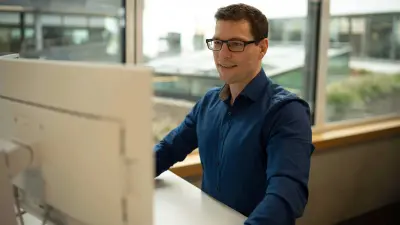
I worked in my previous position at Bosch for six years and participated in the entire development cycle of our product —until it went into series production in 2020. So that was a good time for me to try out something new. Then I found out about MISSION TO MOVE at an internal career fair. Although I had previously worked in the field of hardware development, I had already repeatedly come across programming and software development, both professionally and privately, and I enjoyed it. Therefore, the continuing education opportunities offered by the SoftwareQualification program were very convincing to me. At this trade fair, I also found my current job, for which I applied as part of the training.
What did you learn in the SoftwareQualification program?
The contents are similar to those of normal university lectures and they are also taught by professors. In addition, we receive ECTS points, which can be credited for a master's degree later on. The only difference is that everything is a bit more compact and more focused: We learned the basics of relevant software topics within two semesters. These include programming, computer architecture, software engineering, algorithms & data structures, software quality & testing, as well as modeling & architecture. There is one final exam per module. Depending on the position you are aiming for, you can also choose two specializations such as AI & Machine Learning, Automotive Engineering or Security. Finally, there were project weeks, in which we were able to apply what we had learned in a software team.
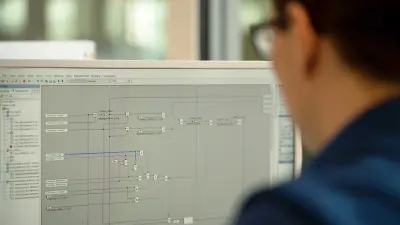
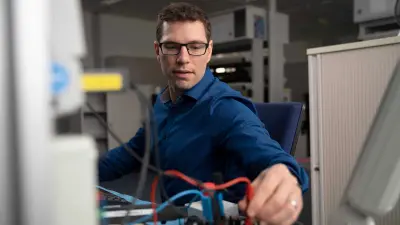
Was this step a big challenge for you?
I definitely had to get back into learning as a student and invested some time in self-study and practice assignments. Especially when you're learning something completely new, at times it can take longer for certain tasks before it finally clicks. We took an exam towards the end of each semester. That was, of course, a more intense phase in which I had to structure my time well and my head was spinning in the evenings. Before the exams, I was given additional days off work to prepare — this meant that, with a bit of diligence, it was not that difficult to combine my studies with my job.
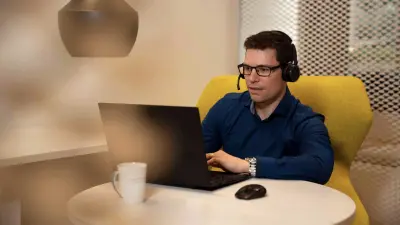
What are you working on today?
In my new position, I work on function and software development in the Powertrain Solutions division. My team and I program software functions for conventional as well as electric drives with battery and fuel cell technology. For example, when testing in the laboratory or in the vehicle itself shows that there is potential for optimization or we want to make the vehicle behave in a different way, we develop these new functions. So ultimately, we always test our software in combination with the hardware. You can't have one without the other.

How easy was it to get started with your new team?
In the beginning, of course, it's like any new job: You first have to get to know the tools and processes. I received valuable support from my colleagues, and they were also very supportive of me in other respects. Even for them as a well-established team of software professionals, “career changers” like me have added value: We bring in new perspectives. Thanks to my hardware know-how, for example, I understand the interrelationships between hardware and software very well and therefore always have the big picture in mind.
“Whether in hardware or software: You have to know what the other side is capable of and what it does. Usually, the classic engineer who only thinks in one direction is not successful in the long run.”
Do you feel well supported by Bosch on the road to transformation and digitalization?
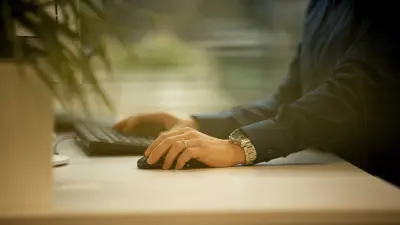
Absolutely. I'm happy to work for a company that is building internal competencies in addition to attracting new talent. After all, that's why there are initiatives like MISSION TO MOVE. In retrospect, participating in the program was a real “enabler” for me, without which I probably would not have gained a foothold in software development.
What are your next development goals?
Of course, the learning journey continues after MISSION TO MOVE: My team and I often have training sessions, for example to learn new programming languages. In addition, my field of work will probably develop further in the direction of software security in the near future. This area is also relatively new to me, so I'll be doing training on that as well. I don't yet know exactly what it will look like — but I'm already looking forward to the next challenge.

Profile

Michael Huis,
engineer in the area of function and software development
Michael Huis studied mechanical engineering with a focus on automotive technology and joined Bosch in 2015 as an engineer in the hardware development division. From the very beginning, he came into contact with software topics and, after six years in his old position, decided to switch to software development. This is why he enrolled in the Bosch MISSION TO MOVE program (with a focus on SoftwareQualification) in 2020 and he was able to complete it successfully. Since then, he has been working in function and software development in the Powertrain Solutions division.